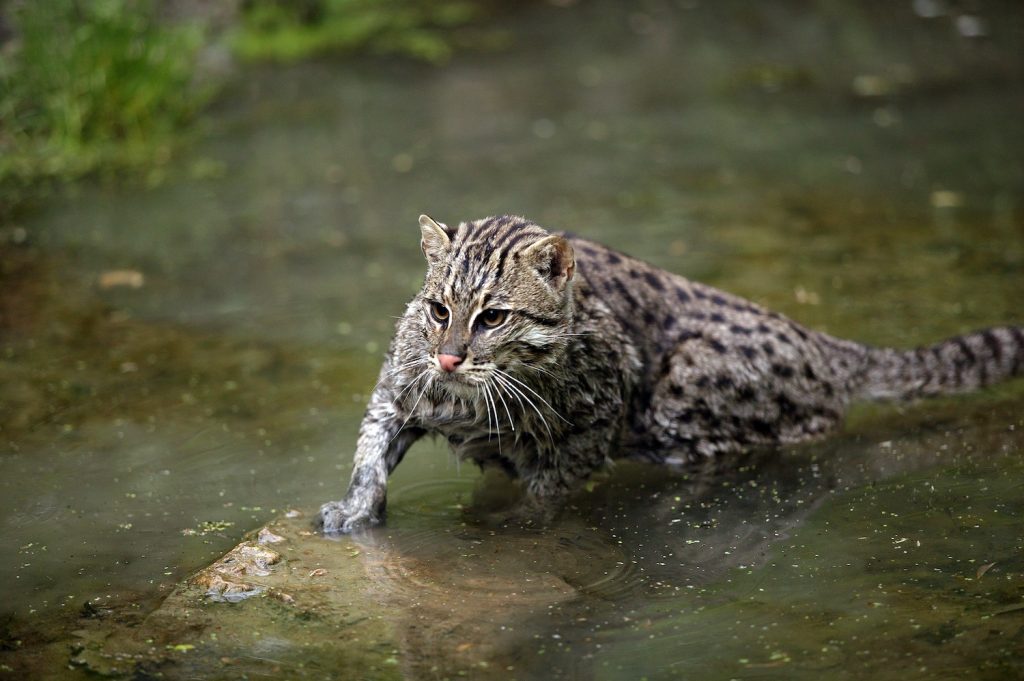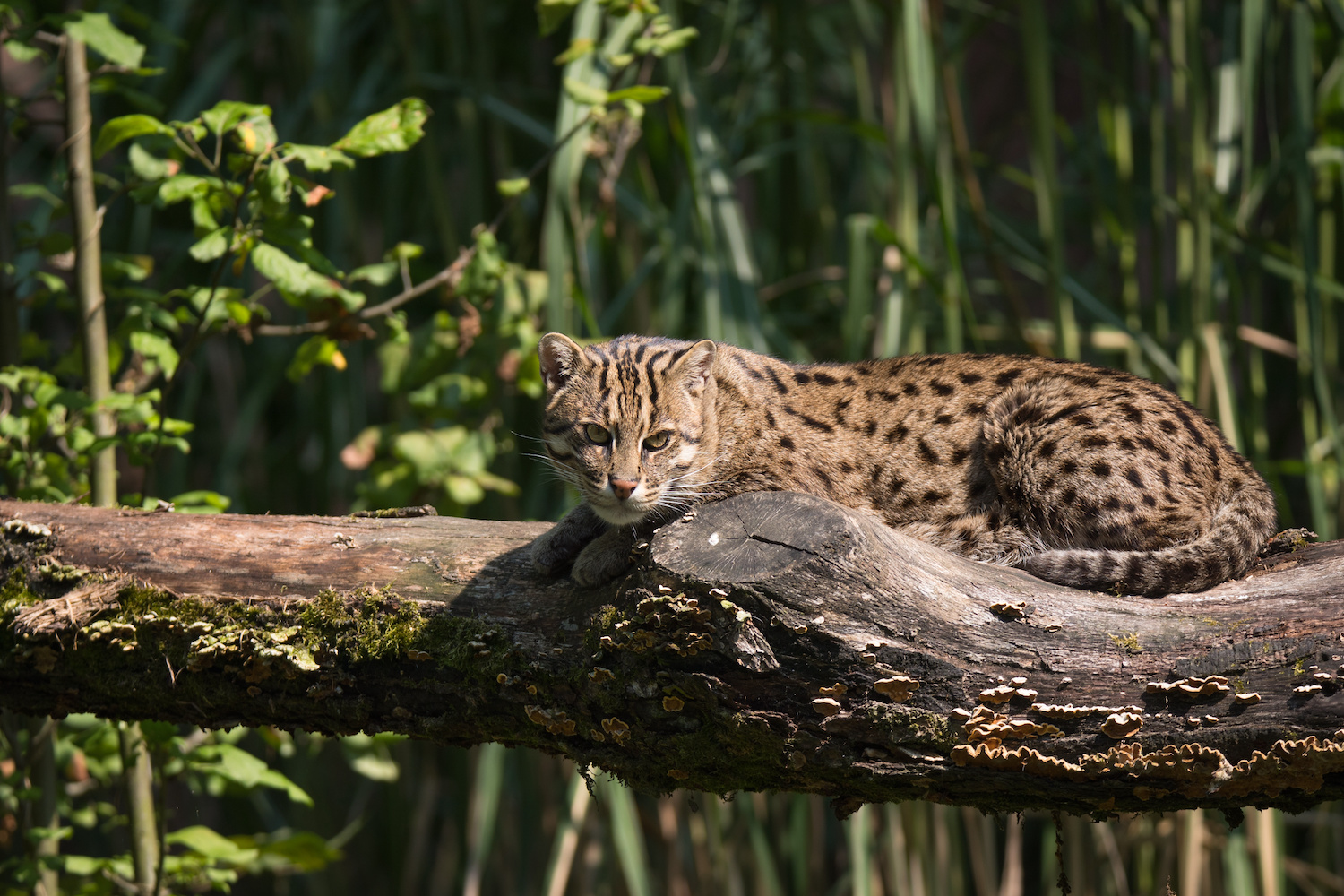The Long Island Aquarium is implementing measures to protect our Fishing Cat from highly pathogenic avian influenza (HPAI), found on Long Island, near our aquarium. HPAI is a disease carried by birds, most often migratory waterfowl, and can be fatal to many species. The virus does not spread easily from animals to humans.
In response to the deadly Avian Flu, we are working under the direction of and in coordination with state and federal agencies and our head veterinarian to ensure the safety of our animals. When it is raining or windy, our veterinarian has requested the Fishing Cat remain inside for his safety.
Our animals are currently safe and healthy, and we are implementing these procedures to protect them from any potential exposure. We’ll continue to monitor the situation closely with state and local officials and make all recommendations to protect our collection of animals.
Prionailurus viverrinus
The Fishing Cat is a stocky and powerfully built medium-sized cat species found in Southeast Asia, Northern India and Sri Lanka. They are found in water habitats like wetlands, mangrove forests, marshes and densely vegetated areas along rivers and streams.
Who Says Cats Don’t Like Water?
They are highly skilled hunters and as their name suggests, known for their unique abilities to fish! Whether tapping shallow water to mimic insects that lure fish to the surface that the cat then scoops up, or diving and swimming after their prey, they use their keen eyesight and sharp claws to catch their meal. They also eat frogs, crustaceans, birds and small mammals.

About twice the size of a house cat, Fishing Cat’s have physical adaptations designed for a semi-aquatic lifestyle. They have a double-layered coat, one with short, dense hair to help keep their skin dry, and longer “guard” hair which gives the cat its color pattern of olive-gray fur with black spots and stripes, great for camouflage! They have a slight webbing between their front toes to help them swim and navigate slippery terrain. Their partially retracted claws allow them to hook and hold fish and their short, yet powerful tails act as a rudder to help them swim long distances, even in deep water!
Fishing cats are typically solitary and nocturnal hunters that rest during the day amongst dense vegetation and then head to the water to find food. These vocal cats communicate with guttural growls, hisses and a low-pitched meow. During courtship, they make a sound called chittering, whichcan sound like a duck quacking. Breeding season is thought to be between January and February and kittens are typically born in litters of up to 4 kittens, after 60-70 days.
Conservation Status
The International Union for Conservation of Nature’s Red List of Threatened Species classifies Fishing Cats as Vulnerable. They face a high risk of extinction and are amongst the most susceptible of the small and medium-sized cats in Southeast Asia.
Population Threats
The major threat to the Fishing cat is wetland destruction, with more than 50% of Asian wetlands threatened and disappearing due to human settlement, pollution, drainage for agriculture, wood cutting, and excessive hunting. The Fishing cat’s main prey has been greatly reduced by destructive fishing practices. Additionally, these cats are often hunted for medicine, food, and body parts, and have also been killed in retaliation for damaging fishing nets or for taking domestic stock.
Visit fishingcat.org to learn more about helping these amazing cats in nature.
Please be advised, Fisher will be off habitat when temperatures drop below 30 degrees.
